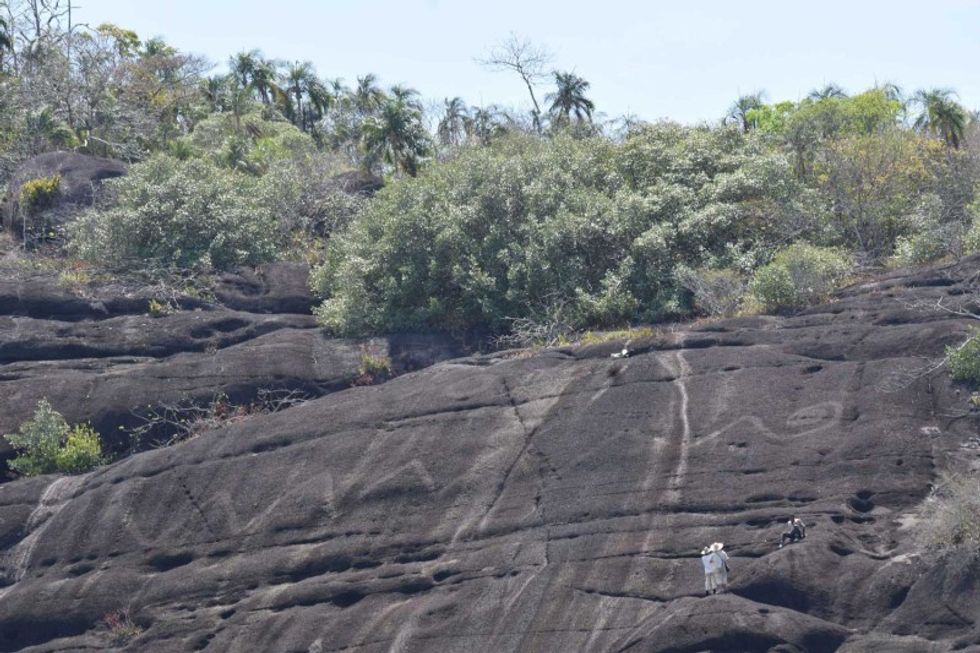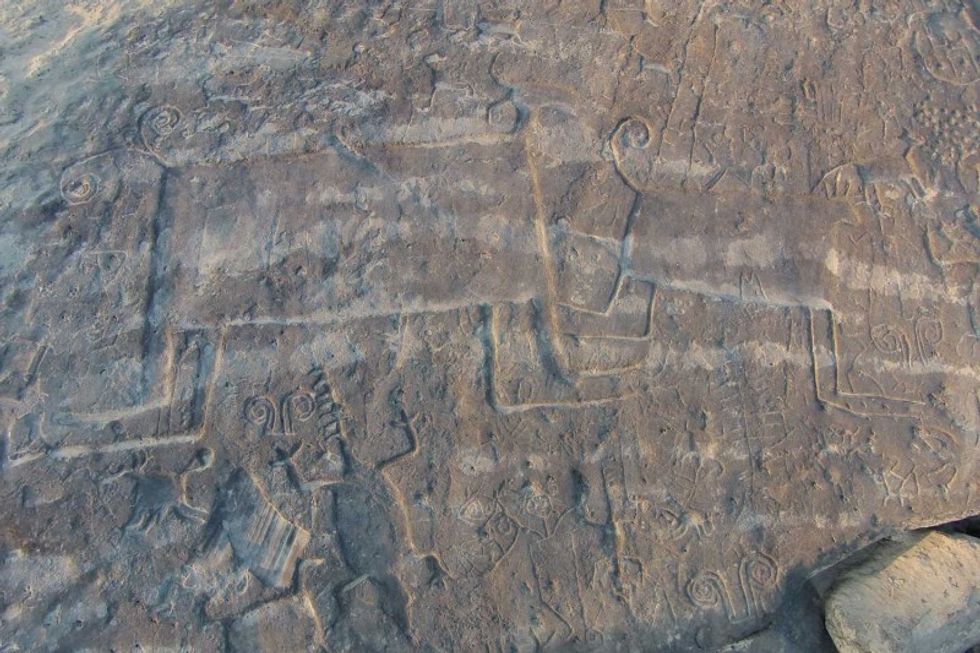Bournemouth University
WikiCommons
The discovery is believed to be the largest prehistoric rock art in the world
Don't Miss
Most Read
Trending on GB News
Archaeologists have been left baffled after finding a huge engraving "in the middle of nowhere."
The engravings feature a range of imagery, including depictions of giant snakes, human figures, and giant Amazonian centipedes.
Found carved into rock faces along the Upper and Middle Orinoco River in Venezuela and Colombia, the largest of the engravings measures more than 40m in length.
The team of researchers from Bournemouth University believe this is the largest single rock engraving recorded anywhere in the world.

One of the monumental rock engravings, depicting a giant snake
Phil Riris/Jose Oliver
While it is difficult to date rock engravings, similar motifs used on pottery found in the area indicate that they were created anywhere up to 2,000 years ago, although possibly much older.
Lead author Dr Phil Riris, Senior Lecturer in Archaeological Environmental Modelling at Bournemouth University, said: "These monumental sites are truly big, impressive sites, which we believe were meant to be seen from some distance away.
"We know that anacondas and boas are associated with not just the creator deity of some of Indigenous groups in the region, but that they are also seen as lethal beings that can kill people and large animals.
"We believe the engravings could have been used by prehistoric groups as a way to mark territory, letting people know that this is where they live and that appropriate behaviour is expected. Snakes are generally interpreted as quite threatening, so where the rock art is located could be a signal that these are places where you need to mind your manners."
LATEST DEVELOPMENTS

Detail of rock art on Picure Island, Venezuela
Phil Riris/Jose Oliver
While some of the sites were already known, the team have discovered several more and mapped 14 sites of monumental rock engravings, defined as those which are more than four metres wide or high, through working with local guides and using drone photography.
Reader in Latin American Archaeology at UCL Institute of Archaeology Dr José Oliver added: "The engravings are mainly concentrated along a stretch of the Orinoco River called the Atures Rapids, which would have been an important prehistoric trade and travel route.
"We think that they are meant to be seen specifically from the Orinoco because most travel at the time would have been on the river. The archaeology tells us that it was it was a diverse environment and there was a lot of trade and interaction.
"This means it would have been a key point of contact, and so making your mark could have been all the more important because of that – marking out your local identity and letting visitors know that you are here."
Dr Natalia Lozada Mendieta from Universidad de los Andes said: "We've registered these sites with the Colombian and Venezuelan national heritage bodies as a matter of course, but some of the communities around it feel a very strong connection to the rock art.
"Moving forward, we believe they are likely to be the best custodians."








